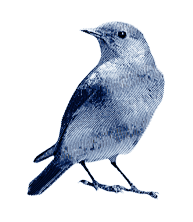Approach to Teaching
My approach is centered on teaching a wide range of musical skills to develop well rounded musicianship. The materials I use are varied according to the age, learning style, and interests of the student. A wide variety of styles are introduced so students can understand and become proficient in different kinds of music, such as classical, boogie and blues, folk tunes, show tunes, and popular music. Many students also choose to play seasonal holiday music and sacred music. Intermediate and advanced students have the ability to explore special interests as their playing skills develop.
Beginning students use method books briefly, but they are supplemented from the first day to keep the learning process more enjoyable and well rounded. While it is helpful to learn one hand position initially to associate the notes on the page with specific notes on the piano, we quickly explore moving to different hand positions to avoid reading difficulties that come from spending too long in one position.
Music theory is taught as a practical part of learning what is on the page, so it is gradually introduced according to the age and playing level of each student. Written work and apps are helpful for learning terms and note names. I tutored music theory and taught the ear training lab for three years in my undergraduate program, so I am experienced in presenting material clearly for beginners through college music students.
Duets are used from the very beginning to help students learn to play with others, which is the foundation for accompanying or playing in orchestra. Playing duets develops listening skills, rhythm, and the ability to keep going no matter what happens. It’s also really fun!
Technique in my studio is more about proper hand position and preventing injury than about repeating drills. Just as in sports, the subtleties of movement and familiarity with patterns help determine how well someone plays the piano. My approach technique has been formed by studying in undergraduate school with Karin Edwards, who trained in Alexander Technique. In graduate school my playing was transformed through studying the Taubman Technique with Joseph Gurt, who had studied with Dorothy Taubman.
Students are exposed to music improvisation and playing by ear from the beginning of study. We listen to recordings, play drums, tap and clap, use online ear training resources, and find creative ways to learn.
Most importantly, my approach is warm and personal. Students are given the technical tools to learn to play, but they are also given encouragement and an environment where they can thrive. Whether an individual is physically or developmentally challenged or highly musically gifted, each student is given the opportunity to develop skills and be challenged to do his or her personal best. We break down everything into manageable segments, talk about how to practice and learn effectively, and get excited about progress along the way. One of my favorite sayings is that we all make mistakes, but it is how we recover from them that is most important. Students learn how to keep going and not be overwhelmed by the stumbles and many struggles that are always a part of the process of learning to play music. Often it happens that skills learned in piano lessons become life lessons as well.








